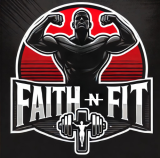Looking to build a stronger, wider back? Discover the top lat-building exercises ranked by effectiveness, difficulty, and muscle activation.
🏋️ Introduction
If you’re serious about building a V-tapered physique that looks powerful from all angles, then developing your latissimus dorsi (lats) is non-negotiable.
Whether you’re training for strength, aesthetics, or overall athletic performance, the right lat exercises can help you go from narrow to next level. In this FaithNFIT guide, we rank the best lat exercises to help you maximize growth while training with purpose.
🔝 What Are the Lats and Why Should You Train Them?
The latissimus dorsi muscles are the large, wing-like muscles that span your mid to lower back. They’re responsible for:
- Pulling movements (like pull-ups and rows)
- Shoulder adduction and extension
- Stabilizing your core during compound lifts
Strong lats give you that V-shaped look, improve posture, and support other lifts like deadlifts and bench press.
🏆 Best Lat Exercises Ranked (From Most to Least Effective)
This ranking is based on EMG muscle activation, functional benefits, and hypertrophy potential.
1. Weighted Pull-Ups
✅ Why it’s #1: High lat activation, scalable with weight, and trains grip and upper back together.
- Muscles Worked: Lats, biceps, rhomboids, core
- Ideal rep range: 4–8 reps with added weight
💡 FaithNFIT Tip: Use neutral grip to reduce shoulder stress and increase comfort during vertical pulling.
2. Barbell Bent-Over Rows
✅ Why it’s powerful: Compound movement that hits lats, traps, and spinal erectors.
- Muscles Worked: Lats, mid-back, rear delts, lower back
- Ideal rep range: 6–10 reps
Form tip: Keep a flat back and pull the bar to your waist, not your chest.
3. Lat Pulldowns
✅ Why it’s great: Accessible, beginner-friendly, and easy to progress with control.
- Muscles Worked: Lats, biceps
- Ideal rep range: 10–12 reps
For max lat isolation, lean slightly back and avoid pulling the bar behind your head.
4. Seated Cable Rows (Wide Grip)
✅ Why it ranks well: Builds mid-lat thickness and allows constant tension throughout the range.
- Muscles Worked: Lats, rhomboids, rear delts
- Ideal rep range: 8–12 reps
Use a wide grip to engage more lat fibers and minimize bicep dominance.
5. Single-Arm Dumbbell Rows
✅ Why it’s solid: Great unilateral movement for symmetry and depth.
- Muscles Worked: Lats, obliques, traps
- Ideal rep range: 10–12 reps
Emphasize a controlled stretch at the bottom and full contraction at the top.
6. Straight Arm Pulldowns
✅ Why it works: Isolation move perfect for finishing a lat workout.
- Muscles Worked: Lats only (minimal arm involvement)
- Ideal rep range: 12–15 reps
Keep arms straight and pull from the shoulder joint, not the elbow.
🧠 How to Program These for Maximum Lat Growth
Want to build lats fast and avoid overtraining? Use this sample push/pull/legs split with lat-focused pull days:
Pull Day Sample:
- Weighted Pull-Ups: 4 x 6
- Barbell Rows: 3 x 8
- Seated Cable Rows: 3 x 10
- Straight Arm Pulldowns: 3 x 15
Frequency: 2x per week with 48–72 hours rest between pull sessions.
🙏 FaithNFIT Perspective
Just as spiritual growth requires discipline, physical development takes consistency and intention. Every rep is an act of stewardship — building strength not just for aesthetics, but to serve with energy and endurance.
“Do you not know that your body is a temple of the Holy Spirit?” – 1 Corinthians 6:19
Whether you’re lifting for strength, health, or confidence, do it with purpose and prayer.
✅ Key Takeaways
- Weighted pull-ups and barbell rows lead the pack for building wide, thick lats.
- Combine vertical and horizontal pulls for balanced back development.
- Isolate the lats with pulldowns and straight-arm work to fine-tune form and tension.
- Train consistently and recover intentionally to build a stronger temple.
📎 Latest Articles to Read Next:
- What Happens If You Stop Drinking Coffee for 30 Days
- Why You Need to Wear a Smartwatch to Bed If You Can’t Sleep
- How a Beard and Mustache Work Like Makeup
- How Swimming Can Help Improve Your Mental Health
- Are You Wasting Money on Supplements?
Join the Faith & Fitness Family
Subscribe now and get exclusive access to Bible-based fitness content and more!
Bonus: iPhone users get a 14-day free trial of our Faith & Fit workout app!
📩 Important: Please confirm your subscription within 7 days. Unconfirmed emails will be removed to help prevent spam and ensure we only send content to those who want it.
👉 Stay strong in faith and fitness — subscribe today!






